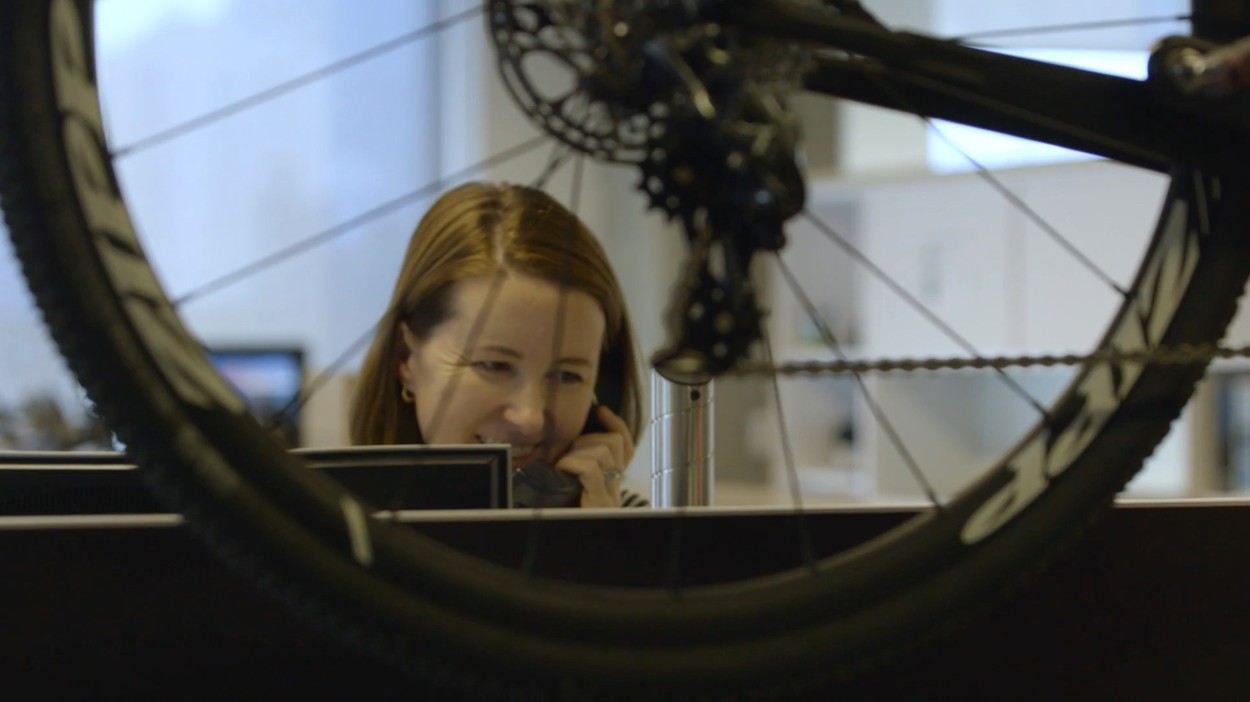Having mobile joints is essential because the shorter your safe range of motion is, the less power you can generate and the more prone to injury you are. Maintaining mobility means stretching your body and also strengthening it so that you have control in the end positions of your stretches. If you’re going to be spending hours in a seated position at work, you have to counter it with at least a few minutes of corrective exercises every day.
What happens to your legs in the office?
The first thing you need to focus on as an office-dwelling cyclist are your legs. The longer you sit continuously, the tighter and less mobile your hips and hamstrings will become. And your glutes will fall asleep and weaken too. Going cycling with legs like that will make you perform worse and enjoy your ride less too. You need a few basic dynamic stretches and strengthening exercises to keep your legs in shape during office hours.
Get in the habit of doing the following two exercises after a long day in the office before getting in the saddle. They will wake your legs up and make them a little bit more mobile. If you want to do a little extra try doing them throughout your workday too. Whenever you’re going to refill your water or taking a short break, do one or both of these.

Leg swings
It’s not always a good idea to do a static stretch if your muscles are cold so that’s where this great dynamic stretch comes in. You can use it before a ride or when you feel your hips stiffening up throughout the day. It helps you warm up the muscle and at the same time gradually increase the range of motion. This one loosens up the hips, hamstrings, and glutes.
Deep squats
Squats aren’t just something powerlifters do with a scary heavy barbell in the gym. You can get a lot of the benefits of squatting by just doing simple deep air squats without any weights. The deep squat is a natural movement that gently stretches hamstrings, quads, Achilles tendons, lower back, and groin. Try to spend a few minutes a day in the deep squat position, when you get good at it you will find it a pleasant stretch for your entire lower body.
Do something for your upper body too
It might feel like you don’t need the upper body much as a cyclist but, unfortunately, your body is all connected and if you start getting stiff in one place it will affect your posture and the way you generate power. And stretching out our chest, neck, and shoulders simply feels good after keeping them in one position all workday.

Neck stretch
Sitting in the office for a long time can be very strenuous for your neck and shoulder muscles that keep your head upright. You can loosen them with a very simple stretch. With your left arm, reach over your head trying to touch the top of your right ear. Now gently pull your head to the left until you feel the stretch in your right neck side. Hold for 30 seconds. Switch arms and repeat the stretch on the other side.
Chest stretch
When your hands are operating the keyboard and mouse, you close your chest up which can roll your entire shoulder and upper back forward, potentially leading to a hunched look to your posture. This is also very similar to what happens while riding a bike. Practice this one easy stretch to compensate. It works best in a doorway. Press both of your hands on each side of the entryway, so your upper arms are parallel to the floor and your elbows are bent 90 degrees. And slowly lean forward and hold for 30 seconds.
Do these two stretches at least once every day, try to have a cue so you don’t forget. Maybe every time you return to work after lunch. Speaking of lunch, the next article in this series will be all about staying on top of healthy nutrition during your office hours.







